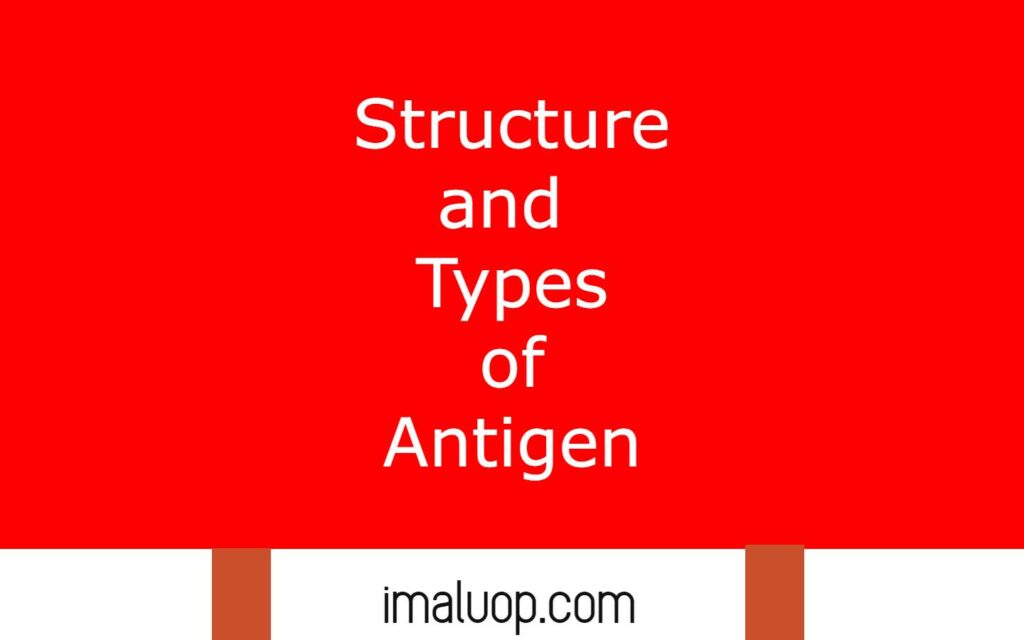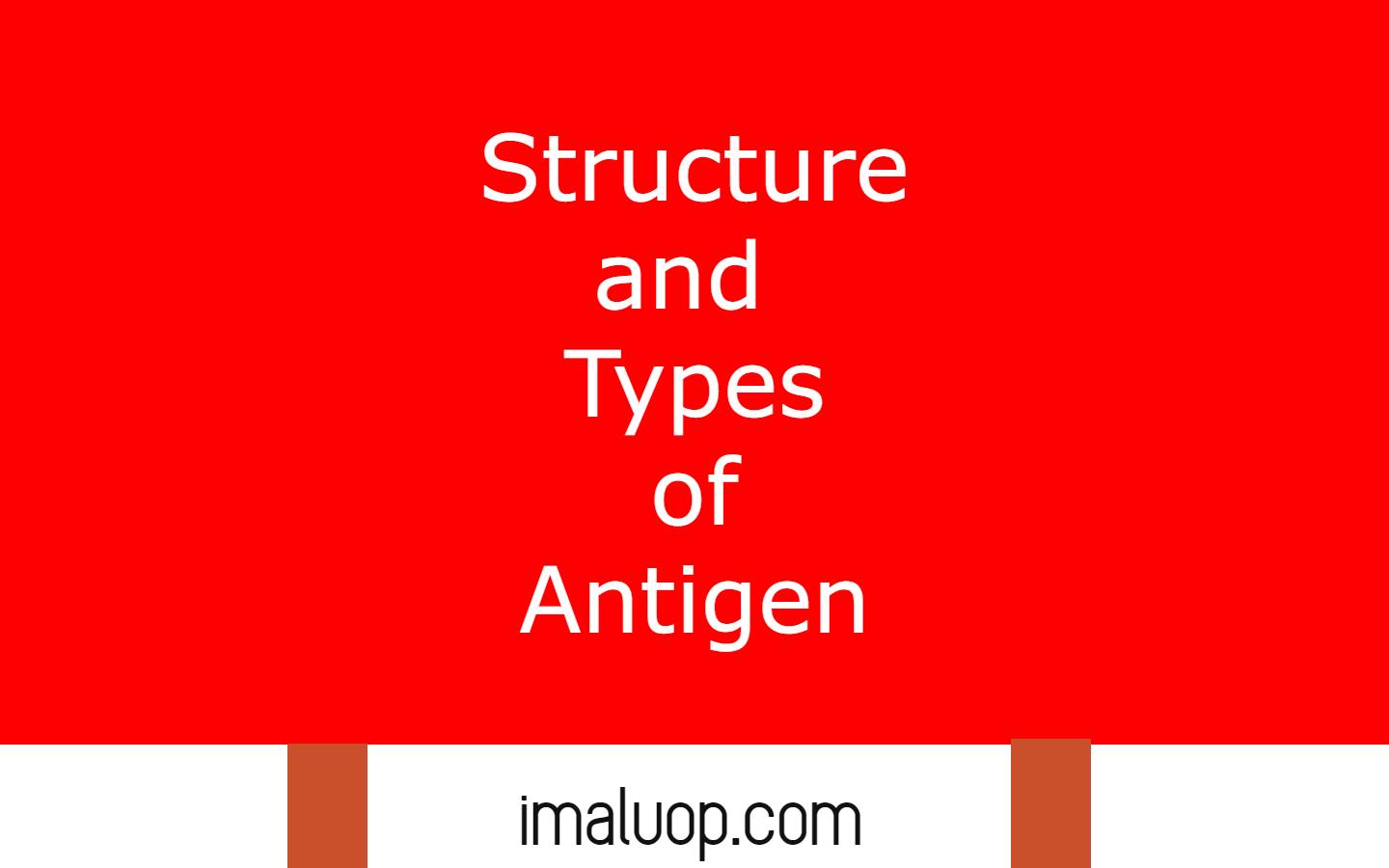Hi, today we are going to discuss structure and types of antigen along with types of antigen, properties of antigen.
Table of Contents
What is Antigen:
Antigen generally protein molecules which present on the surface of external pathogens like bacteria, viruses which is an indication for pathogens. When our immune system finds an antigen, our immune system becomes active and immune reactions start to inactive the pathogen through different processes like agglutination, opsonization.
For example when a virus enters into our body some large protein molecules act as antigen and trigger our immune system in which antibodies react with the antigen and make the antigen bearing pathogen inactive.
Structure of Antigen:
An antigen has several antigenic determinants or epitopes which are specific for antibodies. Because every antibody has at least two antigen binding sites and the antigen binding sites are specific for the epitope on the antigen. For this reason specific antibodies react with specific antigen like a key for a specific lock.
Types of Antigen:
Depending upon various factors, like their origin, we can divide antigen into different categories.
Types of Antigen On the Basis of Origin:
Endogenous Antigen:
Endogenous antigen is present inside the body which may produce different reasons like metabolism or maybe due to any viral or bacterial infection inside our body.
Exogenous Antigen:
This is the most common type of antigen which enters inside our body from external sources. For example a virus enters inside our body then the antigen present on the virus is an example of exogenous antigen.
It can come inside our body through inhalation because the air we inhale during breathing can have different types of pathogens. Sometimes we inject antigen inside our body to acquire immunity against a certain specific pathogen.
So vaccination in which we inject antigen to stimulate our immune system for a specific pathogen is also an example of external antigen. When pollen grains enter inside a person who has an allergy, allergic reactions start inside the body due to the pollen grains and here the pollen grains are also an example of external antigen.
Same also occurs when a person takes a food which causes allergy to the person, here also the food acts as external antigen.
Autoantigen:
In autoimmune disorders our immune system recognizes our own body cells as external enemies and here the reason is due to development of autoantigen inside our body. It occurs when some genetic changes occur in our body which makes our own body cells parts antigen for our immune system.
And this type of antigen which is not an actual indication of harmful pathogens but causes an antigen antibody reaction called autoantigen.
Tumour Antigen:
Some tumor cells process antigen for stimulating our immune system and this type of antigen are known as tumor antigen, for example MHC- I and MHC – II are examples of tumor antigen.
Native Antigen:
This is a type of antigen which is not yet processed by antigen presenting cells in our body, called as native antigen.
Types of Antigen On the Basis of Immune Response:
Immunogen:
Immunogen is a type of antigen which can trigger immune response independently and they may be protein molecules or polysaccharide chemically.
Hapten:
Hapten can not trigger an immune response independently; they need carrier protein molecules to induce our immune system and they are non proteinaceous in nature.

Properties of Antigen:
- Chemically antigen is either protein or polysaccharide with molecular mass 14,000 to 6,00,000 Dalton.
- They are able to induce the immune system and they are very specific for antibodies like the key lock system.
- Their specific nature is due to their complexity in their chemical structure, the more complex chemically they are Complex chemically more they are specific for an antibody.
Reference: Structure and Types of Antigen
Read More: Structure and Function of Antibody
Hi Everyone!!! Welcome to Imaluop. Imaluop always try to learn some new and he want to share to other people. Here we will try to learn various topics on Science, specially on Biological Sciences.
